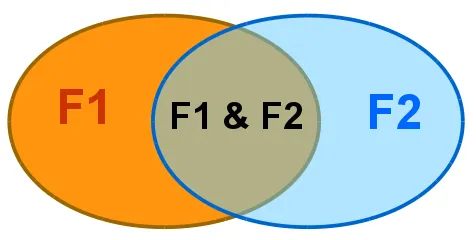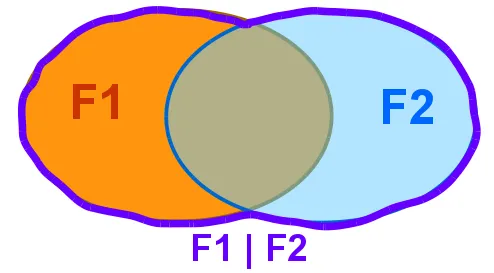在这份代码中,example1 和 example2 让我感到困惑。
type F1 = (a: string, b:string) => void;
type F2 = (a: number, b:number) => void;
// re: example 1 and 2:
// After the =, | means "or" and & means "and"
// Before the =, & means "or" and | means "and"
const example1: F1 & F2 = (a: string | number, b: string | number) => {}
example1("Hello", "World")
example1(1, 2)
// example1("Hello", 2) // Error! number is not assignable to parameter of type string... (and vice versa)
const example2: F1 | F2 = (a: string | number, b: string | number) => {}
// example2("Hello", "World") // Error! Argument of type string is not assignable to parameter of type never
// example2(1, 2) // Error! Argument of type number is not assignable to parameter of type never
// example2("Hello", 2) // Error! Argument of type string is not assignable to parameter of type never
// re: example 3,4,5:
// Before the =, | means "or"
// const example3: number | string = true // Error! Type Boolean is not assignable to type number | string
const example4: number | string = 1
const example5: number | string = "foo"
// re: example 6,7
// Before the =, & means "and"
// const example6: {a: string} & {b: number} = {a: "foo"} // Error! Type '{ a: string; }' is not assignable to type '{ a: string; } & { b: number; }'.
// Property 'b' is missing in type '{ a: string; }' but required in type '{ b: number; }'.
const example7: {a: string} & {b: number} = {a: "foo", b: 5}
在我的看法中,
example1和example2中的运算符(等号前面的)似乎与其他运算符的行为相反。以下是我预期这些示例应该如何工作的方法:const example1: F1 & F2 = (a: string | number, b: string | number) => {}
// example2("Hello", "World") // Error! Argument of type string is not assignable to parameter of type never
// example2(1, 2) // Error! Argument of type number is not assignable to parameter of type never
// example2("Hello", 2) // Error! Argument of type string is not assignable to parameter of type never
const example2: F1 | F2 = (a: string | number, b: string | number) => {}
example1("Hello", "World")
example1(1, 2)
// example1("Hello", 2) // Error! number is not assignable to parameter of type string... (and vice versa)
如果"字符串的类型 !== 数字的类型",那么example1甚至不编译也是有道理的。
为什么这个代码不能按照预期工作呢?

